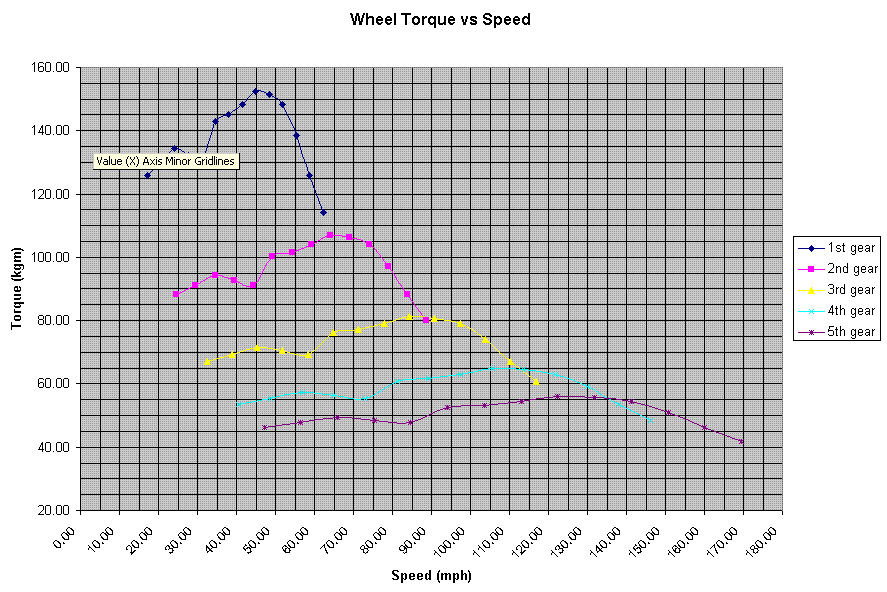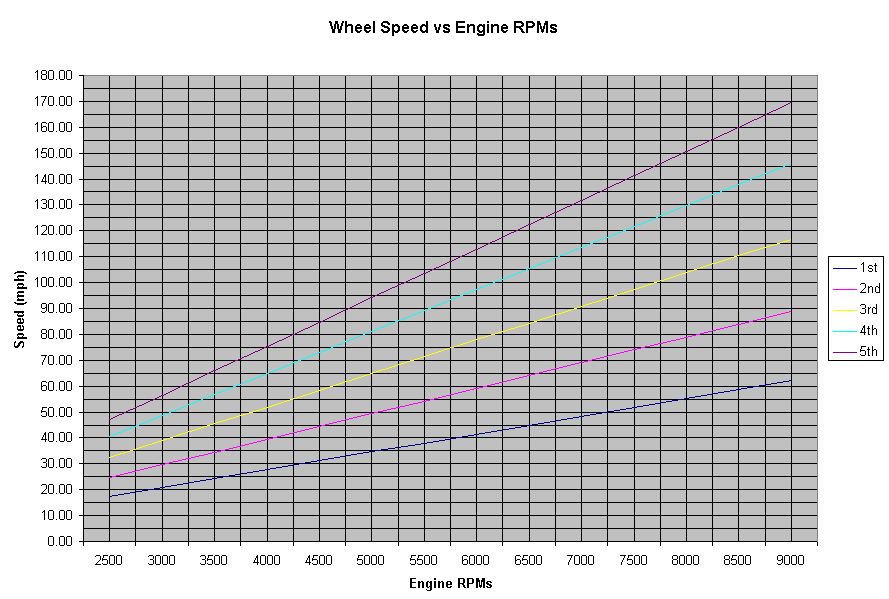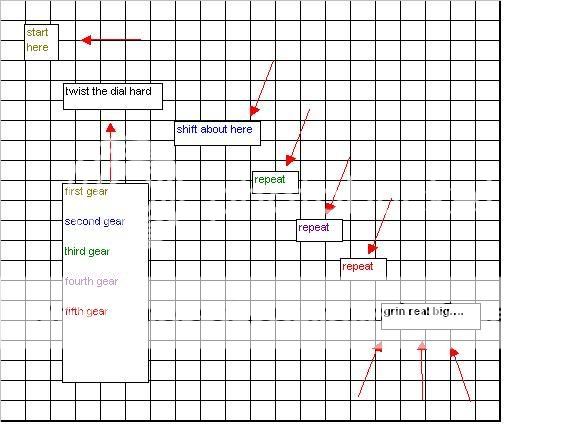UselessPickles
Making Grand Canyon replicas from air boxes...
After my recent day of fun at the drag strip, I began to wonder what the optimum shift points are for the FJR. In order to find out, I had to graph rear wheel torque against road speed for each gear and see where intersections occurred.
Results
The MS Excel spreadsheet I created to generate the graphs can be found here. The resulting graphs are displayed below for your convenience. Unfortunately, this forum will not display BMP images, so I had to convert to another format that introduced some artifacts that make the first graph a little more difficult to read than it should be.

Where one gear's torque curve intersects the next gear's curve, look down to the corresponding speed. Then use the next graph to find out what the engine RPMs would be at that speed in the initial gear. The tachometer is probably more accurate than the bike's speedometer, so it would be better to time your shifts based on RPMs rather than speed.

Caveats
Sources of Data
Engine Torque: https://fjr1300.info/chart.html. I obtained torque values at 500rpm increments from the graph from 2500rmp up to redline at 9000rpm.
Gear Ratios: Owner's Manual for a 2007 FJR.
Rear Wheel Circumference: Some website I found through google that displays all kinds of tire dimensions based on a specified tire size code.
Methods of Calculation
Rear Wheel Torque (for a given engine RPM and gear): [Engine torque]x[gear ratio]
Speed (for a given engine RPM and gear): ([Engine RPM]/[gear ratio])x[Wheel circumference]x[miles per inch]x[minutes per hour]
(note: gear ratios include the "final drive" reduction ratio which is composed of a "primary" and "secondary" reduction ratio from the owner's manual)
Results
The MS Excel spreadsheet I created to generate the graphs can be found here. The resulting graphs are displayed below for your convenience. Unfortunately, this forum will not display BMP images, so I had to convert to another format that introduced some artifacts that make the first graph a little more difficult to read than it should be.

Where one gear's torque curve intersects the next gear's curve, look down to the corresponding speed. Then use the next graph to find out what the engine RPMs would be at that speed in the initial gear. The tachometer is probably more accurate than the bike's speedometer, so it would be better to time your shifts based on RPMs rather than speed.

Caveats
- Speeds are not valid for a GenI bike because of the change in gearing for GenII bikes, however, any resulting RPM-based shift points from these graphs should be applicable to a GenI bike. GenI results could be easily had by modifying the "final drive ratio" value in the spreadsheet (I had to multiply primary and secondary ratio values from my manual to get this value).
- This is only valid for a bike without any performance mods. If your bike is modded, you would need to calculate everything based on your actual engine torque.
- The inefficiencies of the drivetrain were ignored, although incorporating it into the calculations would simply adjust all torque values by some fixed ratio which would result in intersections still occurring at the same speeds. For the purpose of determining shift points, absolute torque values are not important.
Sources of Data
Engine Torque: https://fjr1300.info/chart.html. I obtained torque values at 500rpm increments from the graph from 2500rmp up to redline at 9000rpm.
Gear Ratios: Owner's Manual for a 2007 FJR.
Rear Wheel Circumference: Some website I found through google that displays all kinds of tire dimensions based on a specified tire size code.
Methods of Calculation
Rear Wheel Torque (for a given engine RPM and gear): [Engine torque]x[gear ratio]
Speed (for a given engine RPM and gear): ([Engine RPM]/[gear ratio])x[Wheel circumference]x[miles per inch]x[minutes per hour]
(note: gear ratios include the "final drive" reduction ratio which is composed of a "primary" and "secondary" reduction ratio from the owner's manual)
Last edited by a moderator:





















































